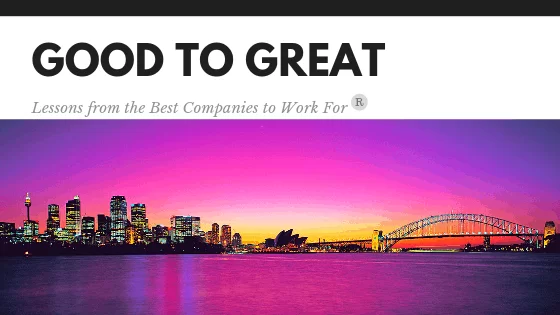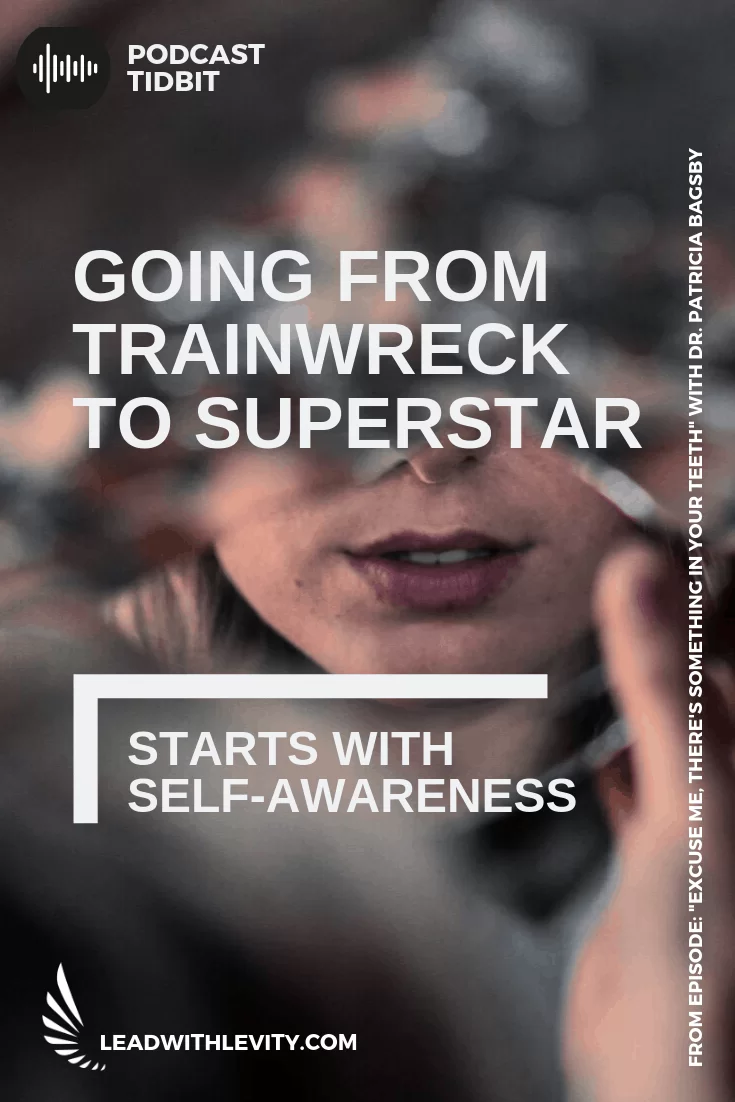Welcome to the Lead with Levity podcast. Today’s guest is Jeremy Miller. Jeremy is a brand strategist for Sticky Branding and a best selling author. Over the past decade, Jeremy and the Sticky Branding team profiled and interviewed hundreds of companies across dozens of industries to uncover how companies can grow extra sticky brands. I’m looking forward to him sharing his expertise with us today about branding, messaging, and the importance of a name.
The Interview
Heather Walker:
Can you tell me a little bit more about this concept of sticky branding? I’m not a marketing person, I’m a psychology person and I’m learning. In my mind, a sticky brand could be a company, it could be a name, it could be an idea, a concept, something that you get excited about it. You can’t stop thinking about it. It comes to mind. It’s top of mind. When you think about, oh, I want ice cream, I might think about Haagen Dazs. I’m in the South. So Bluebell is big for us. But when I lived in the Midwest, it was Ted Drewes. And sticky is something that really, it’s not like that girlfriend boyfriend that you never want to see. Again, it’s the person that you want to keep. You want to keep them on your list. You want to call them back and you want them to call you back.
Jeremy Miller:
It’s actually the psychology side of how do you get somebody to know you, like you, and trust you, and ultimately choose you first. All of the descriptors you just used are perfect. And I will say that any company of any size can create a sticky brand.
It’s really a choice. It’s not a question of how big your marketing budget is… it’s preference. Much of what branding is is psychology. It very much draws down to persuasion science and how you form and shape behaviors that create likeability.
Jeremy Miller
Heather Walker:
How did you get into this?
Jeremy Miller:
Out of necessity. Necessity is the mother of all invention. So I started my journey in the software industry. I joined my family business, which was an HR recruiting company back in 2004. Y2K had ended at the end of ’99. And then we had the .com bubble burst and 911 happened. A short recession followed. And, we thought what was affecting the recruiting and job market was all those factors before we realized the sales problem.
But we have a new phenomena Facebook…LinkedIn was only 2 years old. They were going online for the very first time. And what they found was ‘we look like everybody else… every other agency out there’.
What I discovered was we didn’t have a sales problem we had a branding problem. Being a sales guy, I was responsible for turning this around. So I started studying everything I could get my hands on in terms of brand and applied it to my own business. The challenge I found was that all of the marketing and literature at the time was very much designed for big companies like Apple, Nike, and Starbucks. I was a small family business. I was really trying to deal with the burgeoning new era of digital marketing and apply marketing theories that were designed for big companies into a small privately held business. In doing this, I changed the company name, I changed the positioning, I basically reinvented my family business and turned the company around… nine months later, it rocketed into growth mode. I just fell in love with everything about what I was doing.
And at the same time, my clients took notice of what we were doing, especially in the realm of digital marketing. And they started to tap me on the shoulder and say, “Hey, can you help me?” That created a small little consulting practice, and it all happened very organically, but I went to school and studied English. My first job out of school was to be a salesperson, I joined my family business as the Director of Sales. But in one special moment, I discovered what was going to be my true calling.
What I discovered was we didn’t have a sales problem we had a branding problem. Being a sales guy, I was responsible for turning this around.
Jeremy Miller
Heather Walker:
Interesting. What I’m hearing is that this concept of sticky branding and the journey that you took, it’s all about finding ways to differentiate yourself so that people choose you.
Jeremy Miller:
For sure, and if you can make that so effective that you don’t have to call people… you don’t have to cold call people you have to persuade people in this, you’ve created that thing that pulls people to you. It makes your life easier. One of the things my dad used to say was, “nothing is pressure like sales.” If I could architect the brand, and the strategy to do that, then everything kind of worked.
Heather Walker:
I can totally see how this would be fascinating for an entrepreneur, CEO, or for the strategy department. How can managers get their employees to care about branding and brand management?
Jeremy Miller:
I think the first thing to recognize is that every employee is responsible for the brand. If we go back 50 years ago…then branding was really a question of advertising. So you’d have taglines, like ‘a diamond is forever’, or ‘M&M’s melt in your mouth, not in your hands.’ And then companies would just spend millions of dollars or millions of dollars in repetitive advertising to create awareness and brand recognition. But today with social media, our expectations and how we work with companies, the marketing advertising side is actually pretty low in terms of expectations. Every employee inside of an organization is affecting the customer experience for everything from product development, to customer service to finance to sales. Everybody is involved in that relationship. And this goes beyond the private sector. Even healthcare and other sectors where you are working with patients– that relationship, that connection isn’t fulfilled through marketing and PR, it’s down to the day to day interactions of everyone in an organization.
I really do believe that a brand is built from the inside out. And it’s a manager’s job to really get clear on the strategy and align with the organization because what we’re really trying to do is empower our people to serve our customers better whoever that customer is. It could be internal, it could be external, or it could be a paid customer. Regardless what it is, the way you do your job, the way you serve people is ultimately the brand building process.
Heather Walker:
You have this new book that I recently read through. It’s called Brand New Name. And it’s interesting. It looks at kind of like strategic planning, but for naming things like, ‘we’re gonna take a deep dive into how we name a thing, whether it’s a project or a company or a product. We’re going to have a nice systematic approach to this.’ I have a quote that I pulled out from it that I think is interesting, and I want to use this to launch a conversation about creative problem solving. I love it. The quote is:
Ideas are delicate. They need to be defended, nurtured and celebrated. Instead, ideas are often judged, criticized, and trampled on. When you stamp on a person’s ideas enough times, they stop creating. Worse, they stop believing they are creative. This is heartbreaking. Many managers don’t even realize that you’re crushing their ideas and spirits. When someone is sharing an idea for the very first time, it’s precious. They need your support and encouragement to get their ideas out. More importantly, they need that support so they know it’s safe to do it again. And that’s the point. You’re not looking for a person’s first idea. You’re developing their ability to create idea after idea. Creativity is a renewable resource that exists in every organization, the leaders challenge is to harness it, and draw it out, and create conditions for it to continue.
Jeremy Miller, Sticky Branding, p. 31
Jeremy Miller:
Thank you. I think you need to read my audiobook!
Heather Walker:
Alright. You can we can talk after this. No, but seriously, I love this excerpt.
Because one thing that levity is connected to is creative problem solving. When you have solid connections with the individuals that you work with, you’re able to have a nice cohesive team, you’re able to solve problems. Your book presents a brainstorming strategy and process that you walk the reader through. Would you mind sharing that with us?
Jeremy Miller:
Sure. Well, let’s take a step back to what is the creative process, and one of my core beliefs really focuses around this idea of employee co-creation. And what I mean by that is, we’re living in a world of very rapid change. One of the challenges that I have seen as I’ve studied leadership challenges in large organizations is in our communication skills and how we’re communicating as teams, but also our problem solving skills.
Part of the problem is we get too busy doing our jobs that we don’t believe we’re creative. The net result of that is we start to hire consultants and agencies and other people to solve these problems for us. I actually believe that’s a mistake, because inside your organization is not only deep domain knowledge, there’s also a vast pool of creative potential that goes untapped. You are creative. Your team is creative. The question that I think a leader should be asking is, ‘how do I harness this creative genius to solve the day to day problems I’m dealing with?’ What my book really is trying to do is provide a starting point on how you use employee co-creation to name something. The process really is three stages. Stage One: Create a strategy – What are you naming? What’s the process that defines the criteria for success and how to perform. Stage Two: A five-day naming sprint where we get everybody involved–as many employees as possible to generate as many ideas as you can for five days. Stage Three: A set of tools and exercises for testing and selecting a name. What I find so remarkable in this whole process is not only do you create the names that you need for your business, which is incredibly important, I think names are the most important brand and marketing assets within any organization. But what I think is more remarkable though, is the culture shifts that happen. Too often managers overlook the creative potential of their teams. And then it’s those moments when you actually lean on people and empower them to share their ideas, that they truly feel connected to the business, and you get their whole self.
And if you can do that, as a leader, that’s where you start to grow your business and your team exponentially.
Heather Walker:
So what is the worst thing that a manager can do that would shut down creative problem solving?
Jeremy Miller:
I think it’s one thing–judgment.
Judgment comes out in two ways. There’s a wonderful author and researcher by the name of Mary Lee Adams. She wrote ‘change your questions, change your outcome or change results.’ And one of the things she talks about is a judger mindset versus an open mindset. What a judger mindset does is someone brings forward an idea and the leader says “No, that’s not gonna work,” you shut them down or assert your own ideas. The more times you shut down someone’s ideas, the more likely they’re not going to contribute. The question I think managers have to ask is, “How do I create the conditions for success so people feel safe and empowered to create ideas and be creative and share something and do something. They may not feel confident. Most the time if you grew up in math or sciences …. Well, that doesn’t actually mean you’re not creative. Creativity is the act of creating ideas. So you might be brilliantly creative in mathematics, but a terrible artist. But we have to set that environment up to say you know what, your ideas are valuable.
When someone is sharing an idea for the very first time, it’s precious. They need your support and encouragement to get their idea out and to work with it. More importantly, they need that support so they know it’s safe to do it again. And that’s the point. You’re not looking for a person’s first idea. You’re developing their ability to create idea after idea. Creativity is a renewable resource that exists in every organization. It’s a leader’s challenge to harness it and draw it out, and create the conditions for it to continue.
Jeremy miller, sticky branding, p. 124
Heather Walker:
I wanted to ask you the flip side of that, but just listening to your talk, it makes me a little sad, because I’m thinking about our school system. Here in the U.S. a lot of public schools are focusing more on teaching to the tests.
They’re focusing on just passing people through whether they know how to read, write, do math. I feel we’re running into a crisis that we’re going to experience in the next few years as these individuals enter the workforce. And some of them may already be in the workforce, honestly. It just makes me wonder…we have education systems that are actually doing everything that they can to shut down creativity. What can you do in the workplace to reopen that and help people who may be afraid they may feel like they don’t have enough?
Jeremy Miller:
How can you unlock that potential?
The first thing is the school system has been beating the creativity out of children for more than two generations. And we can see that scientifically. And so there is a fascinating set of research that has studied creativity in the school system called the ‘creativity crisis.’ And what we have found is since the last 100+ years, IQ scores have continued to rise generation by generation–on average, eight points per generation since 1990. Where creativity scores are declining at a very rapid rate, IQ is actually accelerating since 2007. And why is that? Well, it’s this drive towards standardized testing. It’s the drive towards hard skills like math or science. There’s all these conditions that are teaching children at a very early age that they are not creative, and that those skills are not valued. This is very problematic in the workforce, because we have an entire generation of adults that have grown up with that creative confidence. What do we have to do as leaders? Well, we have to accept that chances are your team is experiencing creative atrophy and may not have used those muscles very well or at all. You want to create opportunities for your people to contribute. You have to be really open and generous and patient to teach them those skills. I think where that comes from is setting up exercises or experiences that allow people to realize that they do have something more to contribute than the technical skills inside their job. A very, very simple example: Rather than bringing people into a boardroom to say, “Okay, guys, I need some ideas. Let’s brainstorm. Right doesn’t work. Yeah, that’s terrible.” So the better way to do this is, “Okay, we are working on XYZ problem. We want ideas on how to solve this,” send that out in an email and ask everybody to contribute 10 ideas to the challenge. They can put it up into a Slack group and put it up into Hangouts or even post on some post it notes. Give them a couple days to think about it, generate their ideas and submit them. And then as a leader, anonymously collect all the ideas and put them up into say, the boardroom or a Slack meeting room or some other place where the group can work on them. That simple act of allowing people space to generate ideas on their own will help get you to better outcomes than having to perform on demand.
Heather Walker:
And this is all a part of your five-day sprint, right?
Jeremy Miller:
It’s baked into the methodology. I really do believe this idea of working alone together. So five days sprint says, I would like you to create five good things per day per person. We give you process, exercises, and tools on how to get that as individuals. Each person is challenged to do that on their own. The benefit of that is you can generate a whole lot of ideas. I did a project recently with a startup here in Toronto, and they were changing the company name. Over the course of five days they came up with 639 names.
Heather Walker:
Wow. All right. Imagine sorting through all of that to come up with one!
Jeremy Miller:
Well, that’s it. That’s where the process of Stage Three comes through. Out of that we have 40 candidates that didn’t have trademark or domain name issues. We analyzed 10 of them. We evaluated them against the strategy. Then we market tested five.
People just follow the concepts. It’s experiences like that… they’re not complicated. They’re not asking you to sit for 20-30 minutes a day of work per person. So you can fit it in your busy schedule to actually ask someone to contribute in our busy working environment.
Heather Walker:
Right. Do you recommend that organizations should name or spend some time coming up with names for their programs and maybe initiatives outside of the obvious names?
Jeremy Miller:
I don’t think a thing has value until you name it. So every system, every process…like even if you’re looking at, say, a school or a hospital–how you name your way finders to help people navigate these spaces. Naming things is actually how you fix value to it. The companies and organizations that spend time giving it a name are the ones that create degrees of agility.
Heather Walker:
You know, it’s really interesting. There’s definitely a naming trend right now in positions. For example, at one point in time, Human Resources used to be Personnel. Then we moved into Human Resources. Now it’s the People Department. You can be the head of people. It’s really fascinating to me–these shifts and the decisions that go behind the shifts. When I look at an organization that has a People Department, and a Director of Fun, it makes me perk up and wonder what are they all about? That must be a really interesting place to work because they put that kind of thought and intentionality into even how they name their positions. They haven’t just taken on standard generic names.
Jeremy Miller:
Do you find from an organizational design perspective that that enhances the organization?
Heather Walker:
I believe that it does enhance the brand. I do.
Jeremy Miller:
…but in terms of effectiveness?
Heather Walker:
I’m not 100% sure about that. It all depends on how much people actually buy into that. Because sometimes you have a really creative recruiter who sold the company on, ‘we need to change our names because this is the trend and Millennials are looking for this’…and they sold them on that. They create a fancy job description and all of that, but if you’re just putting lipstick on a pig, then you know, it’s like anything else. However, if people are buying into those games, and they do feel like ‘yes, I am the Director of Experiences. I bring the fun and the laughter. I bring the joy.’ Then yeah, it can have a profound effect on customer service and how they treat one another.
Jeremy Miller:
You’re making a really important distinction. If you are naming a position based on the individual and based on someone’s ego then that becomes problematic because that’s in the realm of personal branding and hierarchies. You can see this at large banking institutions where everyone happens to have the title Vice President even though they have no direct reports.
That was self aggrandizement. Whereas, you talk about what could be a great organization, they are labeling positions and departments that have civilizational focus. And in that way, they are using names to convey meaning. There’s that important distinction there. Titles are misused, because they are not labeling things in terms of strategy or outcomes. You’re labeling things for ego and brand. And if you think of what a strong brand is, it is something that serves a customer brilliantly, that creates preference. Who are you serving when you just call yourself Chief Brand Officer, the Chief HR Officer and Chief Whatever? It’s a little bit silly.
Really be asking the question, “How can I as a leader, gain skills and expertise to unlock the creative genius of my team?” That question on its own is really what separates average leaders from great leaders because it’s a question of empowerment. When we’re dealing with so much change and so many rapid shifts inside of a workplace, then what we really got to be thinking about, it’s not a command and control structure, but an empowerment structure.
Jeremy Miller
Heather Walker:
Right, exactly. Those were the big things that I really was curious about with job titles and creative problem solving. If someone is interested in learning more about this…about naming and all of that, of course they can go find your book on Amazon. Are there any other sort of keywords or phrases that they should look into?
Jeremy Miller:
Well, I think if you’re interested in naming, there’s not a lot of resources to turn to… one of the reasons why I wrote my book. So what I was setting out to do was to create not only the inspiration and the science of how names persuade, but also provide a methodology and process to solve the problem. From a leadership perspective, if you’re really interested in these topics of creativity or employee co-creation, I would absolutely say, “hey, you should check out the the research report by Dr. Kim, called the Creativity Crisis.” It’s shocking to see just how we are beating the creative skill set out of children. That’s not going to necessarily give you the answers, but then I would look towards other areas such as design thinking, or agile project management and other areas.
Really be asking the question, “How can I as a leader, gain skills and expertise to unlock the creative genius of my team?” That question on its own is really what separates average leaders from great leaders because it’s a question of empowerment. When we’re dealing with so much change and so many rapid shifts inside of a workplace, then what we really got to be thinking about, it’s not a command and control structure, but an empowerment structure. This is incredibly difficult.
It means you’re relinquishing control, it means you’re developing new skills. Employees are developing skills. What I tried to do with Brand New Name was to give a structured process, but anyone who’s listening and going, ‘you know, this sounds interesting,’ then it would be to do two things: 1) read up on co-creation, creativity and empowerment, and then 2) apply and learn and tell your employees what you’re doing so they can give you feedback and you can learn as a collective. If you do that, I’m confident that you’re gonna have a much more fun and rewarding work management experience. You’re gonna get a lot better performance.

About Jeremy Miller
Jeremy Miller is a brand strategist and bestselling author. Over the past decade, Jeremy and the Sticky Branding team have profiled and interviewed hundreds of companies across dozens of industries to uncover how companies grow Sticky Brands. Jeremy shares his expertise as a writer, consultant, and keynote speaker. His blend of humor, stories, anccccd actionable ideas will inspire you to innovate and grow your business and brand.
The Lead with Levity podcast is a show for leaders who care deeply about what makes/breaks the employee experience. Our guests are dynamic researchers, practitioners, consultants, and business leaders. We cover foundational elements that are needed to avoid forcing the fun. We also invite lively managers who lead with levity to show us how it’s done. Thanks for joining us on this journey.









